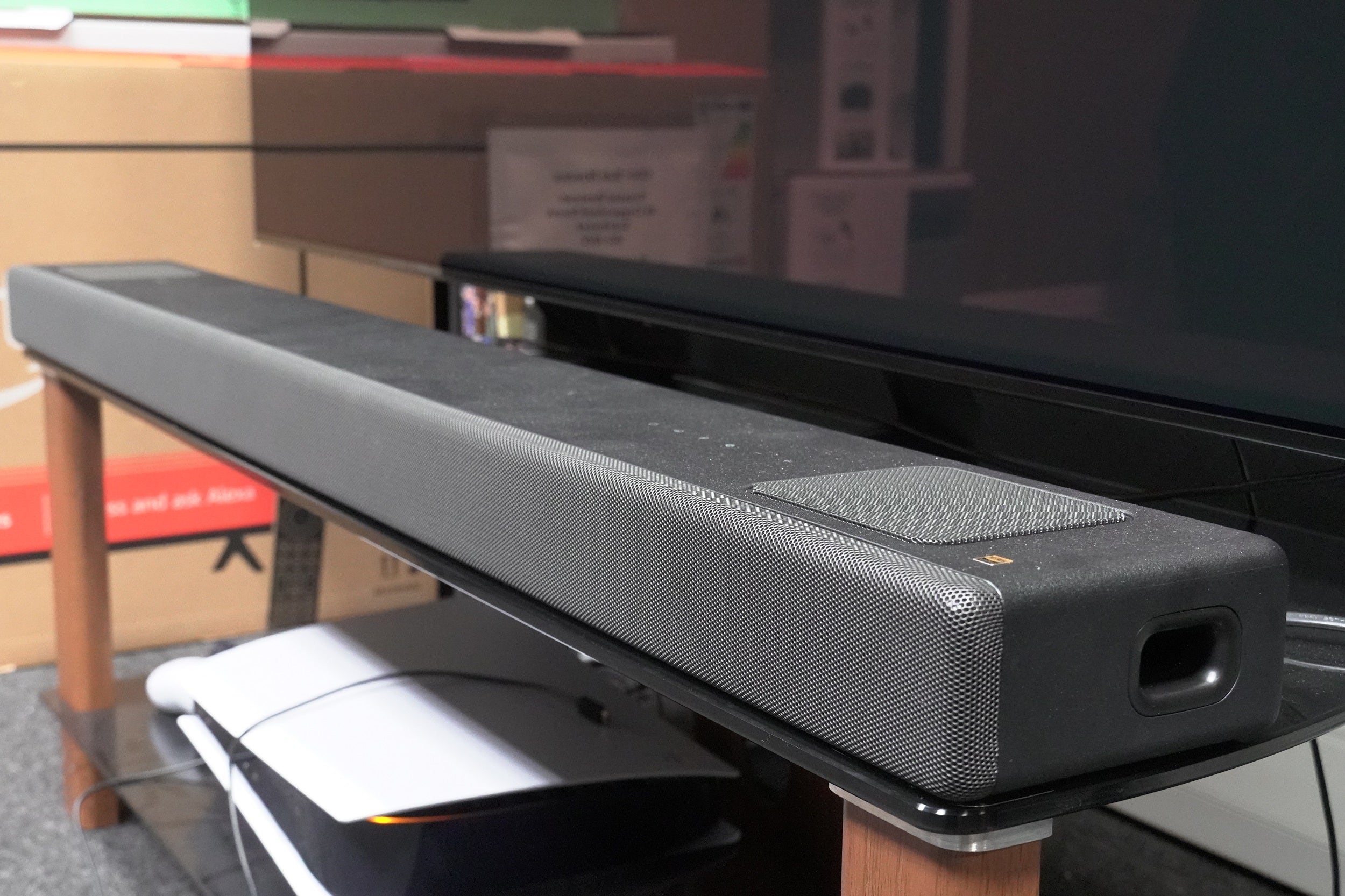Verdict
A powerful-sounding Dolby Atmos and DTS:X soundbar, the Sony HT-A5000 produces a clear, detailed, and in the right setting, expansive soundstage. It performs well with TV and music too for those who want a soundbar that’s a consistent performer across a range of sources.
Pros
- Powerful sound
- Consistent delivery across a range of sources
- Expressive music performance
- Slick integration with Sony BRAVIA TVs
Cons
- Expensive upgrade path
- Large footprint
- Built-in Chromecast performance disappoints
Availability
- UKRRP: £899
- USARRP: $999.99
- EuropeRRP: €899
- CanadaRRP: CA$899
- AustraliaRRP: AU$1195
-
360 Spatial Sound MappingImmersive 360 audio with support for Dolby Atmos -
X-Balanced speakerLess distortion, punchier bass -
AudioDolby Atmos and DTS:X
Introduction
Sony’s refresh of its soundbar range began with the HT-A7000 in 2021, and not long afterwards it was followed by the HT-A5000.
The HT-A5000 is the step-down bar from the flagship version. It’s less expensive, with fewer channels of audio (9 compared to 11), fewer connections and less power at its disposal.
The price bracket in which the Sony HT-A5000 finds itself in is not short of competition. The Sonos Arc and Bowers & Wilkins Panorama 3 have the same RRP, so how well does the Sony soundbar stand out against distinguished competition? Here are my thoughts.
Design
- Large footprint
- LED display
- Distinctive looks
Compact is not a word I’d use to describe the Sony HT-A5000. Like the step-up HT-A7000 this is a big soundbar at over a metre wide, 140mm in depth and 67mm tall. The height allows it to sit comfortably beneath most TVs, but the width could be a problem if you have a TV that has stick out feet.
The width of the bar is close to that of a 55-inch TV but trying to place it beneath Sony’s XR-55A80L (in its soundbar position) and it couldn’t fit. A TV with a central stand should be fine though you’ll need some space in front of the TV to accommodate the A5000.
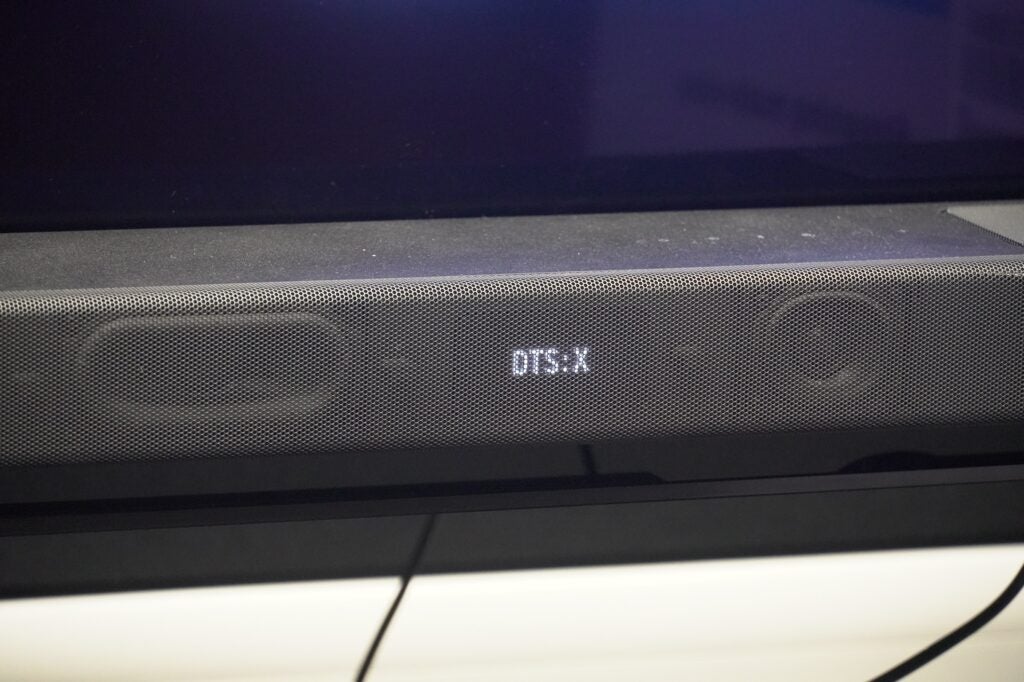
The aesthetics have been pared down from the divisive HT-A7000 (which I liked the look of), but still adhere to Sony’s favoured ‘omnidirectional block concept’, which seems to translate as ‘mighty big soundbar’.
There’s a transparent grille on the front where, at a certain angle, you can see the drivers behind, along with an LED display that’s bright enough to be viewed from a seating position, alongside bass ports at either end.
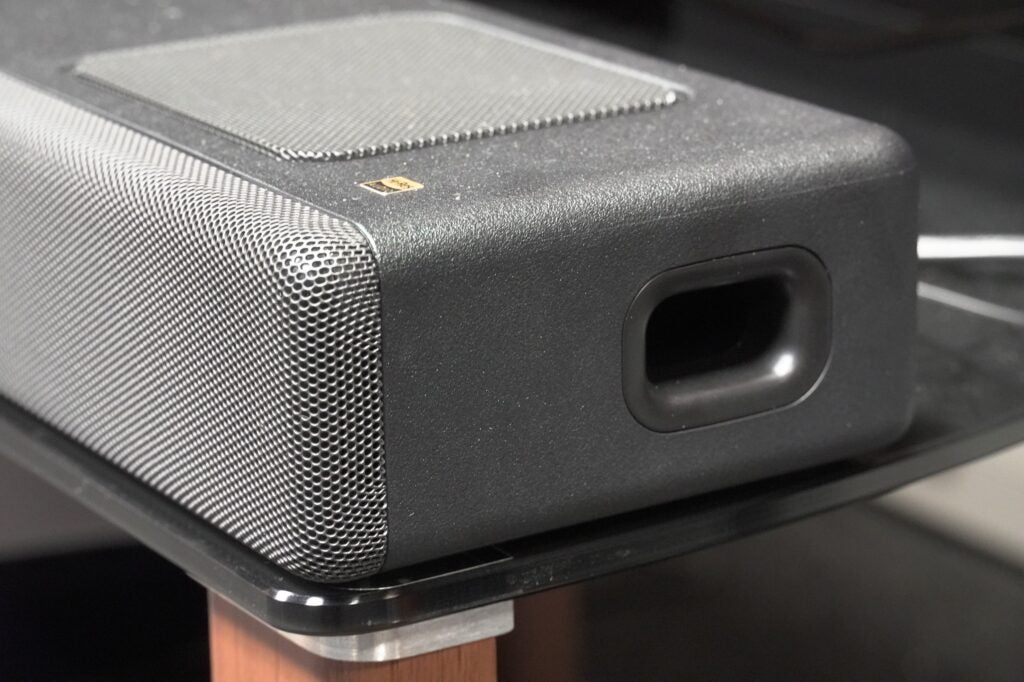
Connections are housed in a recessed area around the back of the unit, with onboard controls on the top surface. The upfiring drivers are covered by the same type of grille that features on the front – it gives the A5000 a distinctive look that I imagine some may not take to. This isn’t really a bar that disappears into its environment, but I don’t mind that.
The remote is the same as the one packaged with the A7000. It doesn’t feature backlit buttons, but the layout is excellent with responsive presses and a nice, cushy feel that makes it nice to use. There are several specific buttons with input switching and, if you add rears and subwoofer, volume control for those units.
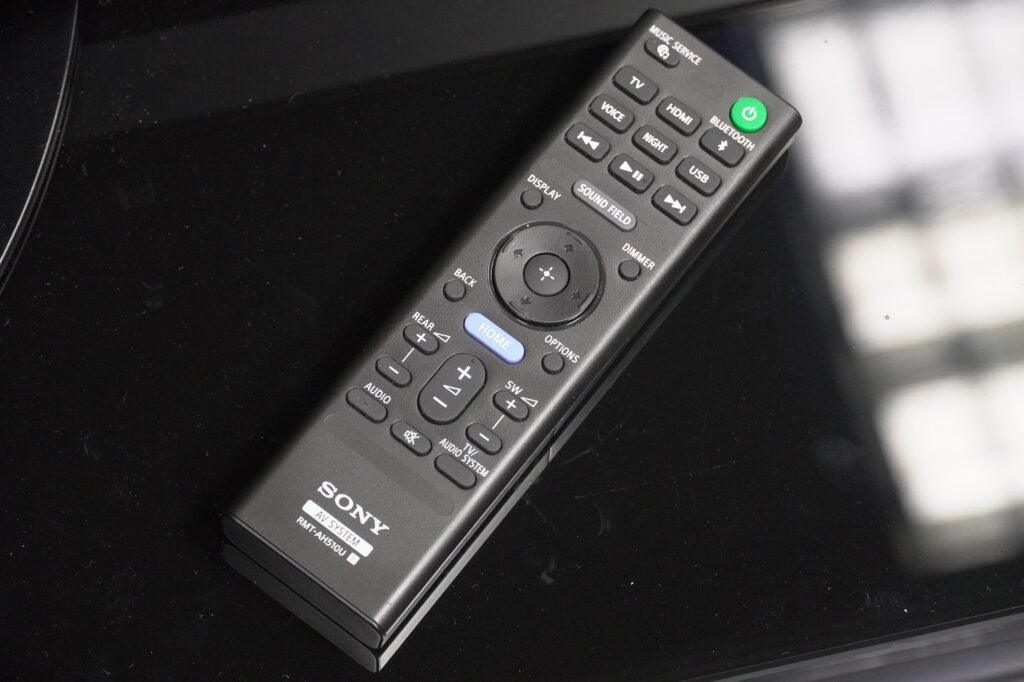
Features
- 4K HDR pass-through
- Dolby Atmos and DTS:X compatibility
- 360 Reality Audio support
Connections entail an HDMI input and output, optical input, and USB. The HDMI input can pass-through HDR10, HLG, and Dolby Vision signals (at 4K/60). There’s currently no 4K/120Hz support for gaming on the table.
For wireless connections there’s built-in Chromecast, Spotify Connect, AirPlay 2, and Bluetooth 5.0. There’s also LDAC support to stream higher quality audio files over Bluetooth (the bar can also transmit in LDAC to other devices).
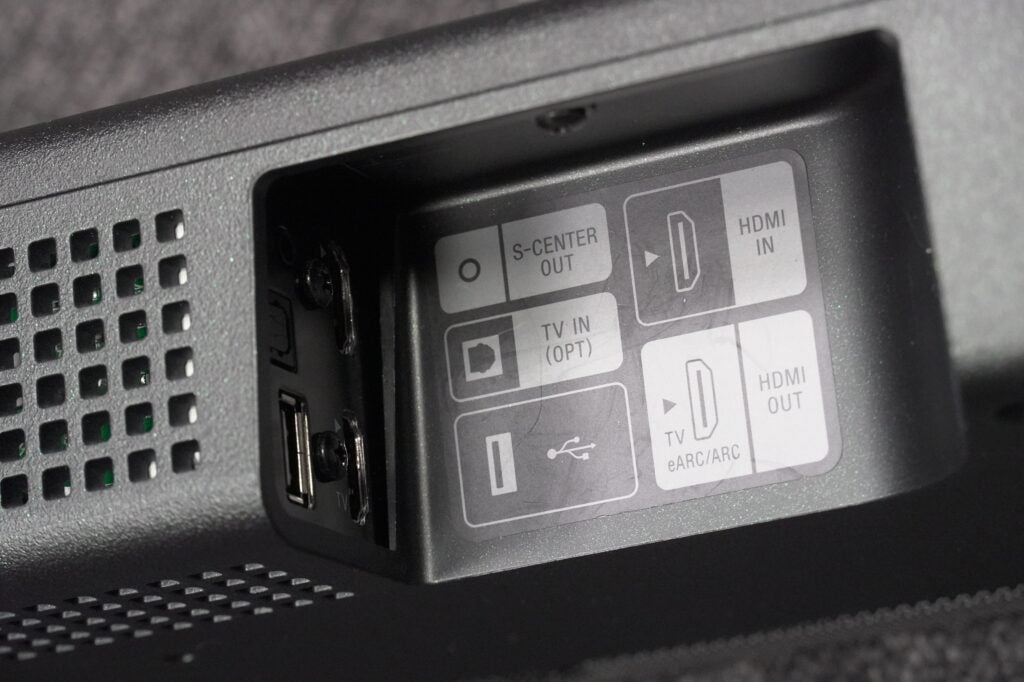
The USB port can play MP3, FLAC, ALAC, DSD and more, while the HDMI ports support a coterie of formats from Dolby (Atmos, Digital+, TrueHD), DTS (DTS-HD MA, High Resolution audio, DTS:X) and LPCM soundtracks to name a few.
Sony’s Vertical Surround Engine creates ‘virtual’ height channels alongside the physical upfiring drivers, while the S-Force PRO Front Surround claims to fire sound towards the listener to create a soundfield that wraps around the viewer.
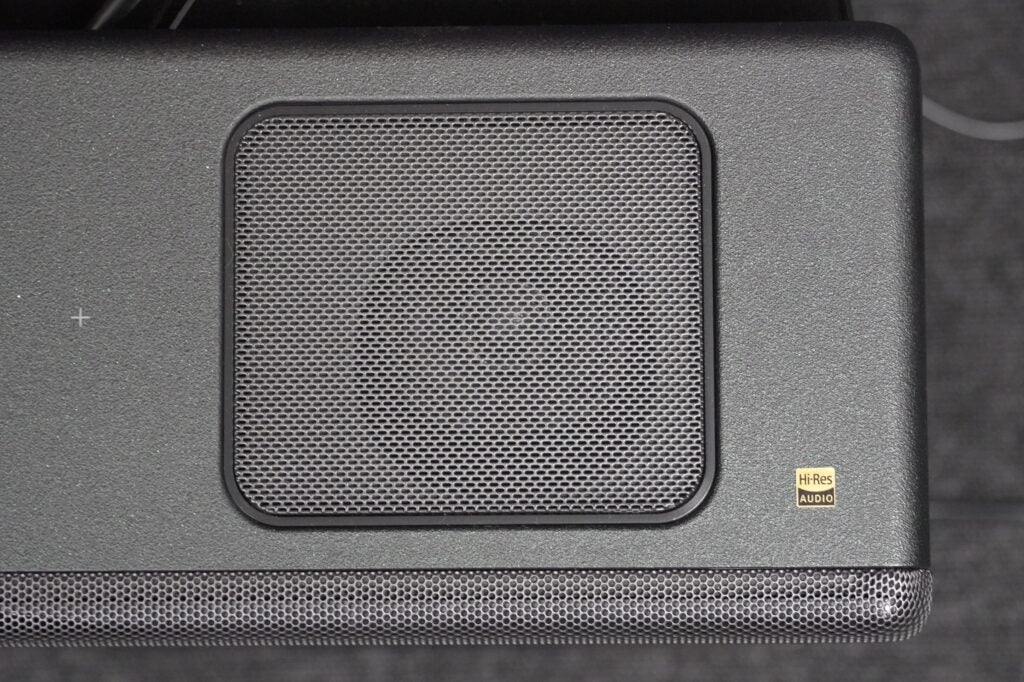
There is also the Sound Field Optimization feature, which uses the bar’s built-in microphones to measure the height and width of the space it’s in to optimise the sound for the room.
The Sound Field Optimization feature is accessible from the bar’s full-screen interface (press the Home button) where along with calibrating the sound, you can go into the settings, access files on a connected USB and set up a connection to an Amazon Alexa device to rope in Alexa smarts (Google Assistant voice control is also possible).
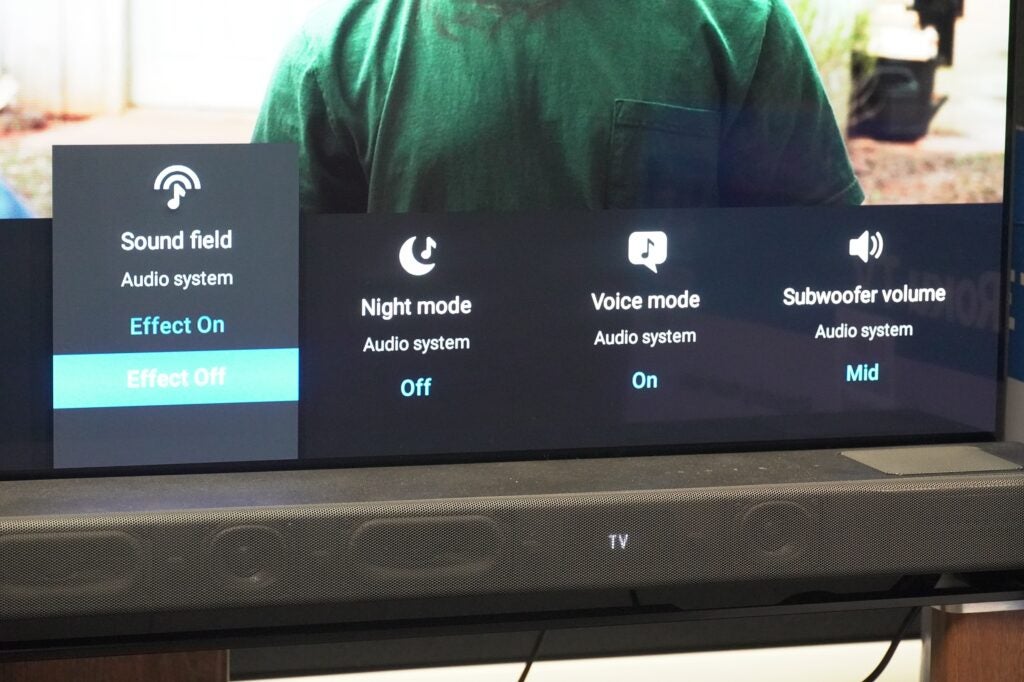
Sony states its DSEE Extreme algorithm can restore high-range sound lost in the compression of tracks for a better-quality performance. For certain BRAVIA TVs there’s the Acoustic Centre Sync feature whereby both the TV and the soundbar can function as the centre speaker simultaneously. The interface of both the bar and TV is streamlined too, so settings for both can be accessed at the same time
There are several versions of Sony’s 360 Reality Audio, the main one being the soundbar can play spatial (or 3D) audio tracks from the likes of Tidal and Amazon Music streaming services. This can be set up through the Sony Music Centre app, which is also the app to go to for Alexa integration.
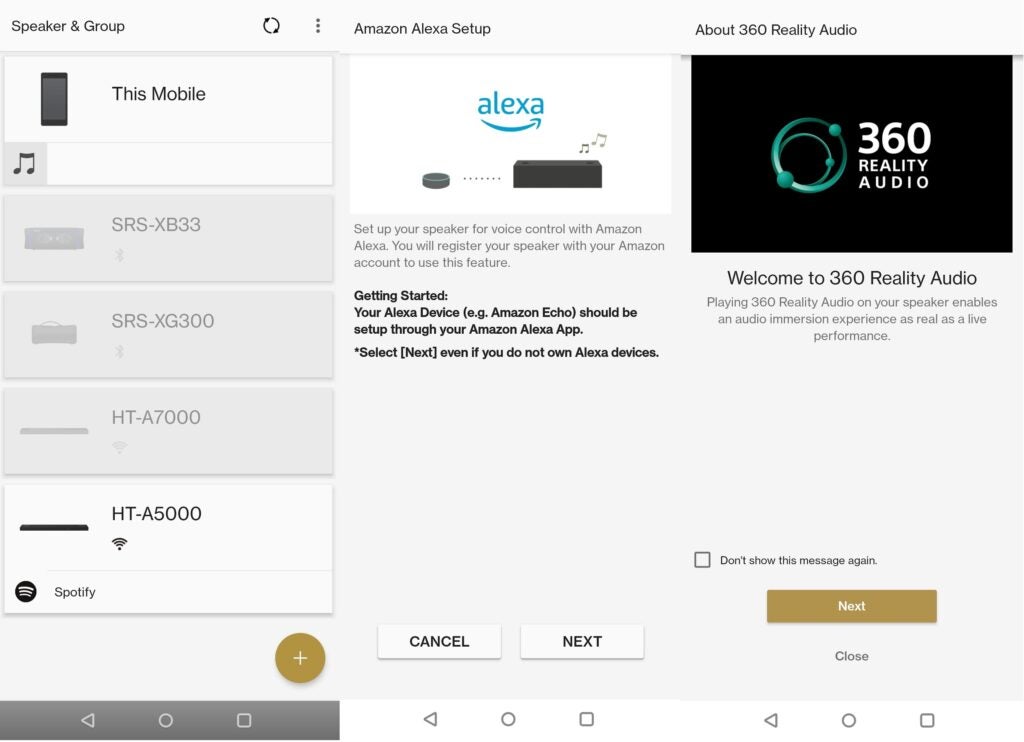
Add wireless rear speakers and in tandem with the Sound Field Optimization, the 360 Spatial Sound Mapping processing creates phantom speakers for a bigger, immersive hemisphere of sound.
This works with matching rear speakers from Sony in the SA-RS35 (£449/$349.99) and SA-RS5 (£699/$599.99), and there’s room to add a subwoofer in the SA-SW5 (£699/$699) and SA-SW3 (£449/$399). All of these ‘optional’ speakers drive the price up though.
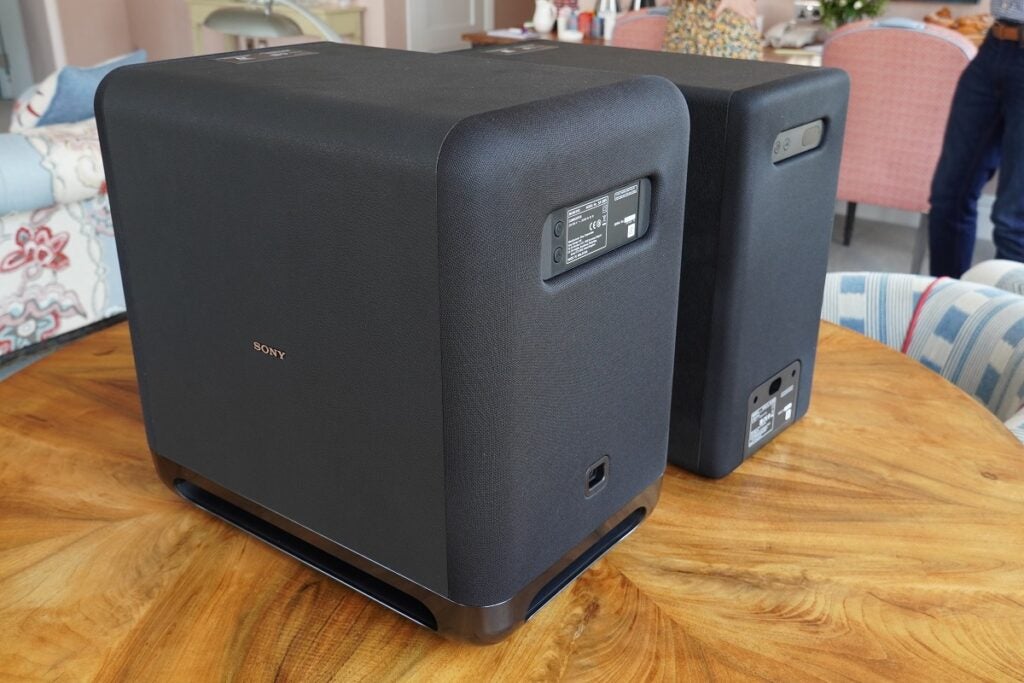
Sony (as far as I can tell) hasn’t gone into the exact specifics of the HT-A5000’s driver setup, but it has a sizeable 450W of power distributed in a 5.1.2 configuration made up of beam tweeters to bounce sounds of walls to expand the surround sound effect: two upfiring speakers, front-firing speakers, and a built-in subwoofer. All are based on Sony’s X-Balanced speaker unit that delivers less distortion.
Sound Quality
- Punchy, powerful bass delivery
- Soundfield function expands soundstage
- Good music performance
The tone and overall audio performance of the Sony HT-A5000 is in keeping with the flagship HT-A7000, but there is a slight loss of power, scale, and ‘height’. It plays like the younger, smaller sibling of the A7000.
But don’t let that dissuade you from taking a closer look at the A5000’s performance. While with Blade Runner 2049 it lacks the A7000’s scale and power at the low end, there’s a firm sense of punch and force to punches in the fight scene between Sapper Morton and K. Adding a subwoofer would make the scene even more explosive.
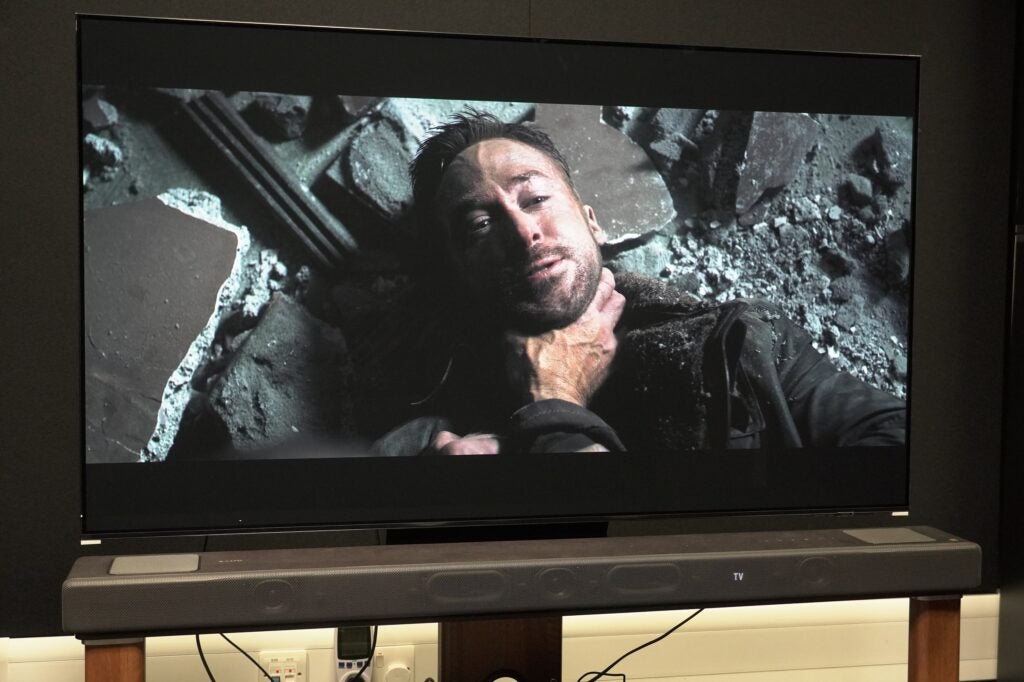
It adopts the same natural, crisp tone with voices as the A7000, placing dialogue where it originates on screen. It describes rather succinctly the difference between the deeper, sterner voice of Sapper Morton and lighter cadence of K, which might not seem like a big factor but achieves the act of immersing the viewer with dialogue where not much is happening visually.
With Jordan Peele’s Nope (with Atmos enabled) there’s weight to dialogue too, but it never sounds anything other than natural with no sibilance noted.
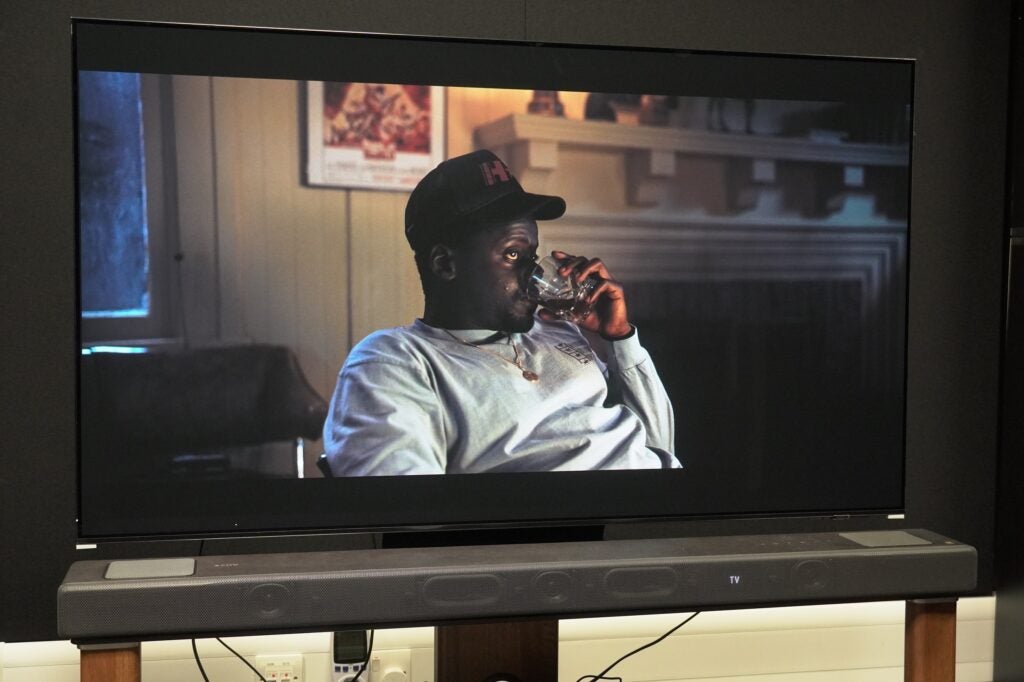
Having had the LG USC9S in for testing at the same time, I did notice the Sony handles off-screen dialogue better, avoiding a processed-sounding tone as well as adding a sense of depth in terms of where the character is in the scene.
For those who have trouble hearing dialogue, the Voice Effect can lift dialogue and make it louder, although it does change the tone slightly and it makes nearby noises louder too, like the kettle on boil in the background of Sapper and K’s conversation in Blade Runner 2049.
The sense of height to the HT-A5000’s presentation feels diminished at first. When the Spinner lands at Sapper’s farm, I can’t get a grasp of the engine as it fires down from above and the Spinner descends. This is where turning on the ‘Soundfield’ effect can exert a positive effect by affording the HT-A5000 a bigger soundscape to play in. Sound effects and dialogue ‘escape’ the bar better rather than feeling as if they’re coming directly from the cabinet.
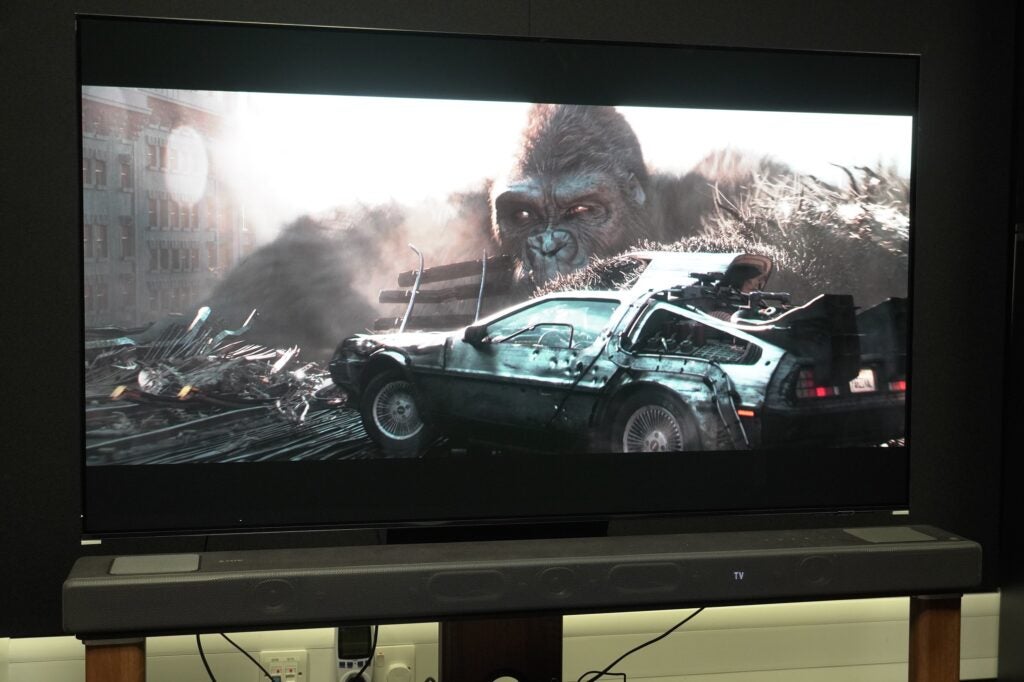
With the Soundfield effect on, the race scene through the virtual streets of New York in Ready Player One takes on a more dynamic and spacious approach. Intensity to the action is driven up a few notches as Parzival’s DeLorean skips through the chaos of cars and trains flipping over, dinosaurs plucking competing racers from the road and King Kong leaping from above.
Height effects are more noticeable in the Soundfield mode, with a little more punch and power afforded to the scene.
The Soundfield function evokes a crisper tone, with a little sharpness evident that results in a smidge of sibilance with dialogue. In Ready Player One’s Distracted Globe sequence, the sense of energy to the scene is appreciated, but the sharp tone does feel rough in places.

The Soundfield setting can also make some effects sound artificial. Watching Netflix’s The Dig (Dolby Atmos) and in a scene where there’s heavy rain, the Soundfield setting makes it sound less natural. It also highlights background noise, as if it’s trying to dredge up every bit of detail in the scene instead of concentrating on what’s in the foreground.
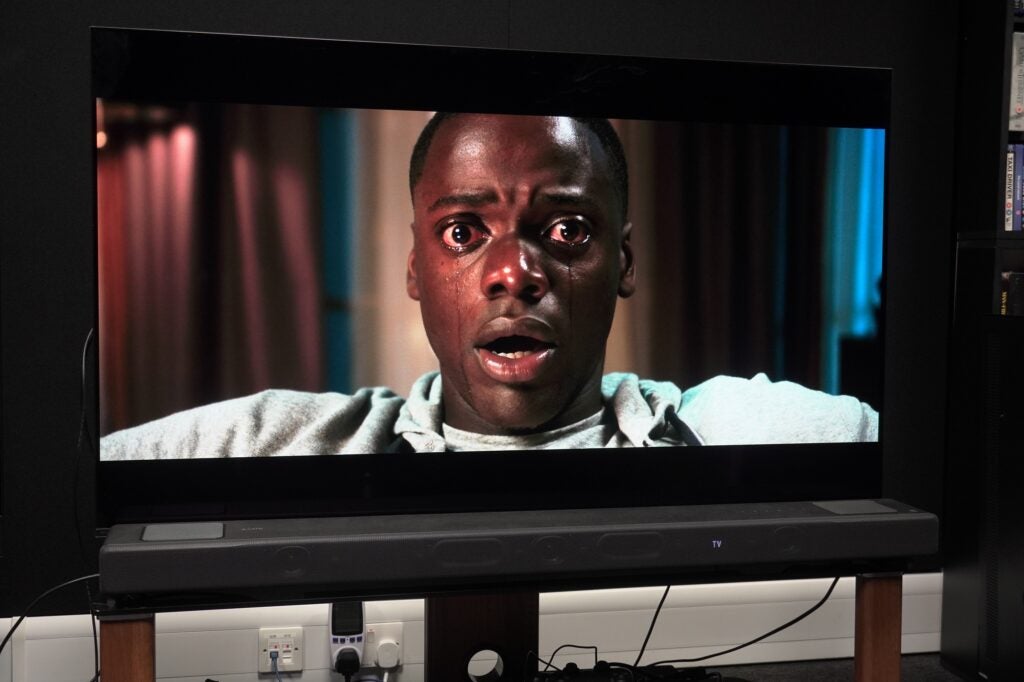
The bar’s performance with DTS:X and stereo content mirrors its Atmos performance watching Get Out. Turning the Soundfield function on widens and raises the soundstage – ambient sounds have a bigger presence and background sounds are projected forward.
Its crisp and sharp tone gives the film’s jump scares a bigger impact. There’s the boost to dialogue in adding more weight, especially to male characters. A stream of The English on iPlayer offers the exact same boost with the Soundfield function on.
I would say turning the Soundfield function off produces a more natural and balanced presentation – a subtler one to be more exact – but you’d miss out on the details I listed above.
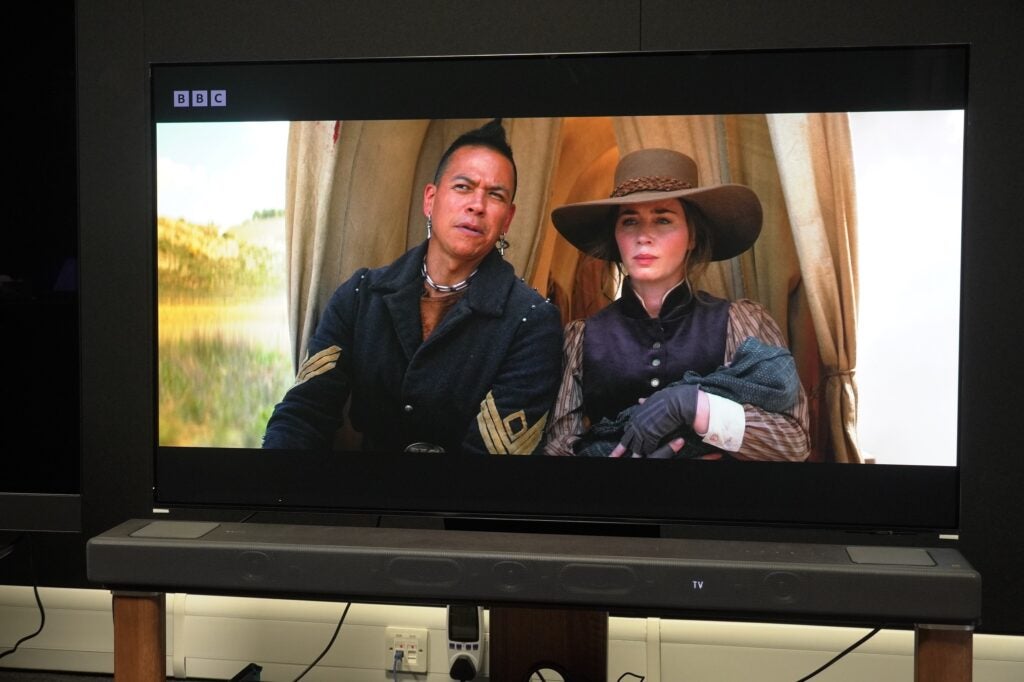
There’s no ‘Music’ mode, at least not one I can see listed, so there’s no means of being able to alter the bar’s EQ. Nevertheless, with the Spotify Connect stream of Orbital’s Petrol, it’s a punchy, energetic, and aggressive performance – the built-in subwoofer is put to good use. It’s not overly crisp in tone, but tracks like Elbow’s The Bones of You can edge on sounding sibilant in Soundfield mode.
Otherwise, the Sony HT-A5000 has all the attributes for a good music performance: solid dynamics, good vocal clarity, bright (but not too sharp) treble reproduction, and lots of energy and power driving its sound. I wouldn’t tend to play music above volume 50 unless you’re hosting a party. Listening to Mitski’s Stay Soft feels like I’m on a workout.
The Bluetooth performance is better than I expected it would be, slightly smoother in tone with bass not as powerful, but there’s still energy to Chvrches’ The Mother We Share. LDAC support seems to elevate its performance beyond the norm.
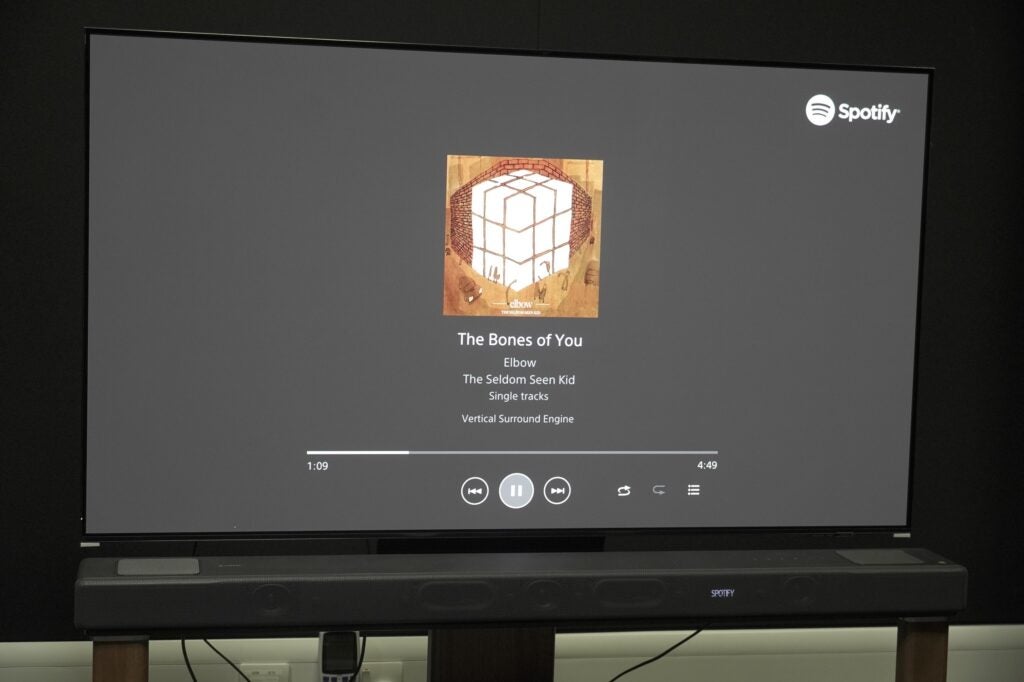
Streaming over Chromecast from Amazon Music is mixed. I’d urge you to stream via the Alexa connection rather than the built-in Chromecast (you’d need to set the bar up with Alexa for this option to present itself).
Use the built-in Chromecast and there’s not the same level of power, thrust, or energy to tracks. The default volume is low; music sounds fuzzier compared to Spotify Connect, and even with the Soundfield setting it sounds small. The worst part is that Ultra HD tracks are downscaled to HD. Choose the Alexa connection and the performance is more in line with other wireless sources.
Latest deals
Should you buy it?
For its powerful performance: The Sony HT-A5000 is a consistently powerful soundbar across a range of sources, with punchy bass, good dialogue placement and good balance across the frequency range.
If you don’t have much space: The HT-A5000 is on the large size, so if space is at a premium, consider more compact efforts like the Sonos Beam 2 or Bose Smart Soundbar 600.
Final Thoughts
The Sony HT-A5000 soundbar is good for films, TV, and music. Its performance out of the box is balanced, but with the Soundfield function there’s a better sense of height and width to go with the bar’s innate sense of energy and power across all types of content.
It’s a big bar that will need space to operate, and functions best when paired with Sony TVs. There’s an upgrade path in the addition of a subwoofer and rear speakers, but this adds significantly to the cost, making it as expensive as the Sonos Arc Surround Sound system.
The Sony HT-A5000 is a powerful immersive soundbar that will elevate a living room’s audio experience. The HT-A7000 is the better bar, but if your budget won’t stretch to over £1000/$1000, the HT-A5000 is a good alternative. Check out our Best Soundbar list for even more options.
How we test
We test every soundbar system we review thoroughly over an extended period of time. We use industry standard tests to compare features properly. We’ll always tell you what we find. We never, ever, accept money to review a product.
Find out more about how we test in our ethics policy.
Tested with real world use
FAQs
There isn’t a subwoofer included with the A5000 soundbar, but you can add one in the shape of the SA-SW3 or SA-SW5 to increase the strength of the bass.



















